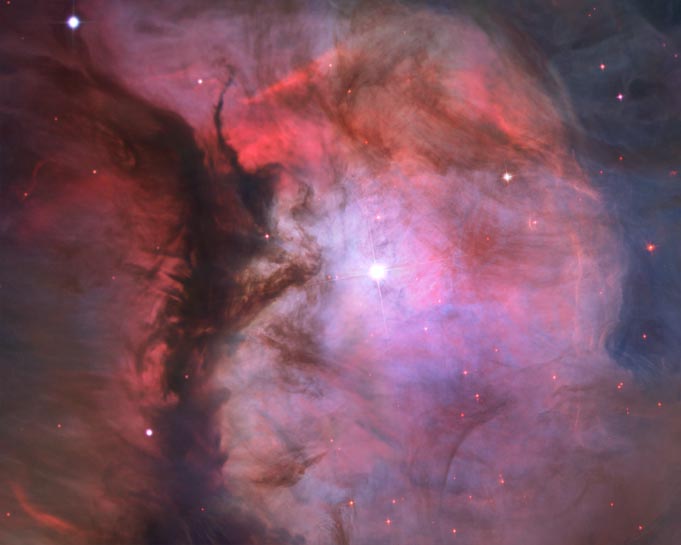
Emission Nebula
RA 05h 35m 17.0s Dec -5° 23' 27.99"
Orion
1,500 light-years (460 parsecs).
9.0
20 x 15 arcmin
October 2004 - April 2005 (ACS), and December 11, 2001 (WFI)
NASA, ESA, M. Robberto (STScI/ESA) & the Hubble Space Telescope Orion Treasury Project Team
January 11, 2006
Closeup: N1109 Overview: Orion Nebula
ABOUT
THIS IMAGE:
A massive star is illuminating this small region, called M43, and sculpting the landscape of dust and gas. Astronomers call the area a miniature Orion Nebula because of its small size and the single star that is shaping it. The Orion Nebula itself is much larger and has four hefty stars that are carving the dust-and-gas terrain.
From Wikipedia:
Messier 43 or M43, also known as De Mairan's Nebula and NGC 1982, is a star-forming nebula with a prominent H II region in the equatorial constellation of Orion. It was discovered by the French scientist Jean-Jacques Dortous de Mairan some time before 1731, then catalogued by French astronomer Charles Messier on March 4, 1769. The De Mairan's Nebula is part of the Orion Nebula (Messier 42), being separated from the main nebula by a dense lane of dust known as the northeast dark lane. It is part of the much larger Orion Molecular Cloud Complex.
The main ionizing star in this nebula is HD 37061 (variable star designation NU Ori), which is positioned near the center of the H II region and located 1,300 ± 160 ly (400 ± 50 pc) from the Sun. This is a triple star system with the brighter component being a single-lined spectroscopic binary. The main component is a blue-white hued B-type main-sequence star with a stellar classification of B0.5V or B1V. It has 19 ± 7 times the mass of the Sun and 5.7 ± 0.8 times the Sun's radius. The star is radiating over 26,000 times the Sun's luminosity from its photosphere at an effective temperature of 31,000 K. It is spinning rapidly with a projected rotational velocity of around 200 km/s.
The
H II region is a roundish volume of ionized hydrogen centered on HD 37061.
It has a diameter of about 4.5', corresponding to a linear size of 2.1
ly (0.65 pc). The net hydrogen alpha luminosity of this region is (3.0±1.1)×1035
erg s-1; equivalent to 78 solar luminosities. There is a dark lane crossing
in front of the region from north to south, known as the M43 dark lane.